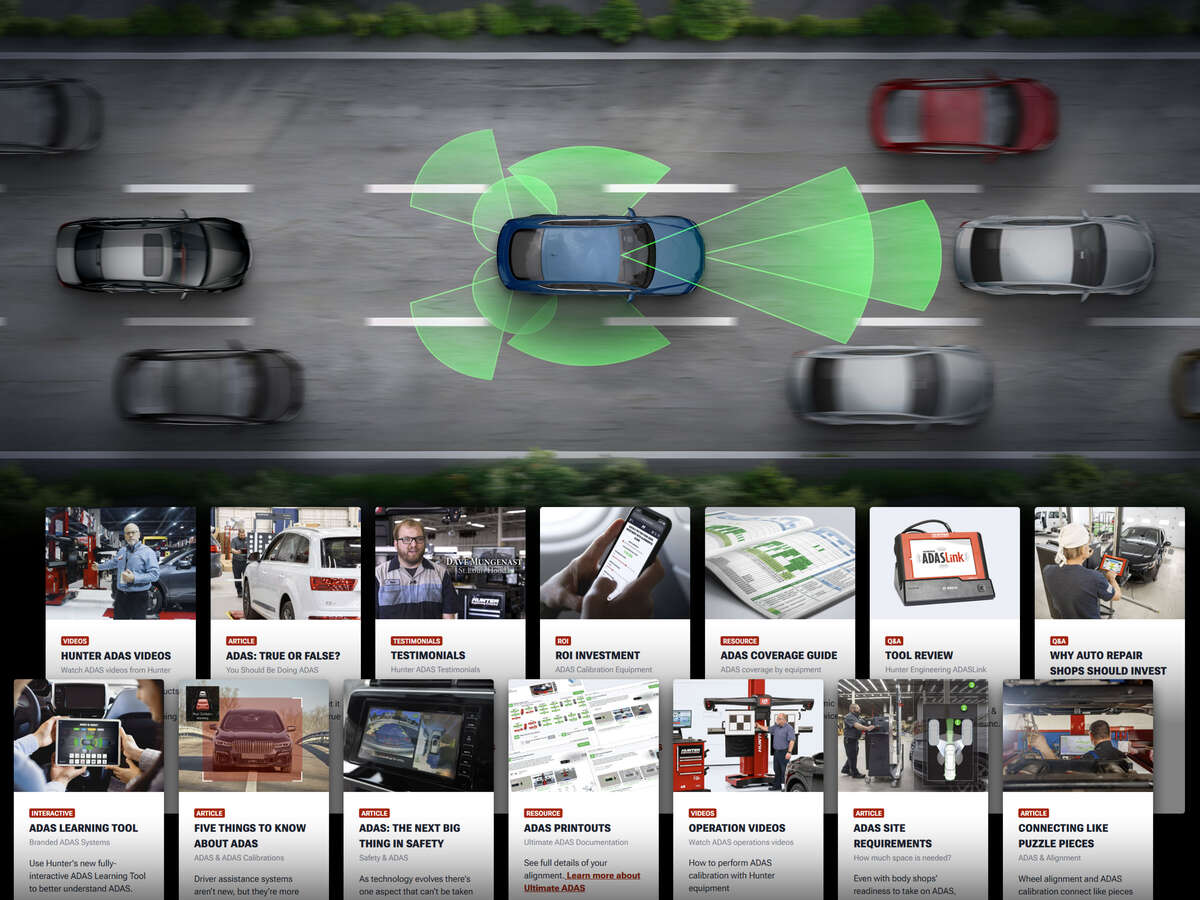Demystifying ADAS
It’s not rocket science. It’s not science at all. It’s following directions.
Although you may not know it, ADAS calibration work comes into your shop every working day. If it were a virus, you’d catch it, because it’s pretty much everywhere.
The question is, how does it leave your shop?
Is your customer driving away with calibrations performed by you, because you do ADAS work, or is that work heading somewhere else, because you don’t?
The good news is that if you’re not in the ADAS business now but want to be, it’s not a big step – especially if you’re already doing alignments and have technicians who know how to follow directions. If that describes your shop, as is likely, you’re nearly ready right now.
The basics of the booming ADAS industry have become familiar. Millions of vehicles on the road today have ADAS. In the not-distant future, all of them will. Each one will require calibrations whenever their ADAS components are disturbed, and there are many, many ways ADAS components can be disturbed. For a repair shop, ADAS is a gift that will just keep on giving.
Yet only a comparatively small percentage of shops are performing calibrations now. That’s understandable. The idea of ADAS as a revenue stream is still relatively new, and it takes time to figure things out.
The work itself isn’t the hard part. Making the commitment to getting started is the hard part. Unfortunately, the longer you wait, the further behind you’ll be.
Because someone is going to do that work.
Reducing the matter to fundamentals may be helpful. There are a lot of numbers associated with ADAS, but here’s the biggest one: The amount of revenue generated across the industry from ADAS calibrations by 2030 is projected to be $4 billion.
Unlike many economic projections, this one isn’t abstract. The vehicles that will make up this $4 billion exist now. They belong to your current customers and all your future customers. The massive opportunity represented by ADAS can be seen in your shop every working day.
So why aren’t more shops doing calibrations? Several obstacles are commonly cited, although the closer they’re examined, the less obstacle they turn out to be.
I’d be interested in doing ADAS work, but I don’t have the space. But you very likely do have the space.
The idea exists that calibrations are something like surveying property – lots of wide-open space and impressive-looking equipment. What’s not well known is that the vast majority of static calibrations seen outside of collisions – maybe as much as 90 percent – involve forward-facing cameras and radar; most requiring less than 10 feet of space and usually not more than 20. This is space in front of the vehicle that nearly every shop already doing alignments will have. Dynamic calibrations, performed while the car is being driven, require no space at all.
I’d be interested in doing ADAS, but I don’t have the techs. But you very likely do have the techs.
ADAS technology is highly sophisticated; ADAS calibrations are not. What’s needed are not necessarily techs with highly developed diagnostic skills earned through years of experience, but those who will diligently and patiently follow the directions reputable ADAS equipment will provide. You employ careful, competent techs like this now, or you wouldn’t be in business and reading this article.
I’d be interested in doing ADAS work, but the investment is simply too much. But you very likely can afford the investment.
There was once a day when most of the equipment and products you now take for granted seemed intimidating; particularly each time you decided to provide a new service. Yet at some point you sat down with a calculator and determined the ROI would justify the purchase. Which, of course, it did.
ADAS is no different. It’s a logical progression. You start small, like this:
5 vehicles per week x 51 working weeks x $232 (industry average calibration) x 70% profit margin = $41,412 unrealized annual gross profit
And that’s just one calibration per day.
You start small – steering angle resets, dynamic calibrations and the like — with appropriate equipment for makes and models you’re familiar with. You gain experience and expertise, and in time you’re prepared to take on more work with more sophisticated equipment. Eventually, you may master the processes and expand calibrations into a true specialty, even to the point of opening a separate ADAS facility.
The bottom line here is that once you decide to keep ADAS in-house, you’ll make it profitable, as your shop has always done.
The reason you should make that decision is because ADAS work is only going to grow. Someone is going do this work and have a lot of success doing it. If not you, why not you?
When your business is ready to get going with ADAS, Hunter Engineering will be ready to support you with guidance, training and equipment.
This article was first seen on Brake & Front End.


Expand your knowledge and awareness on Advanced Driver Assistance Systems (ADAS) with articles, videos, interactive tools, and downloads.


